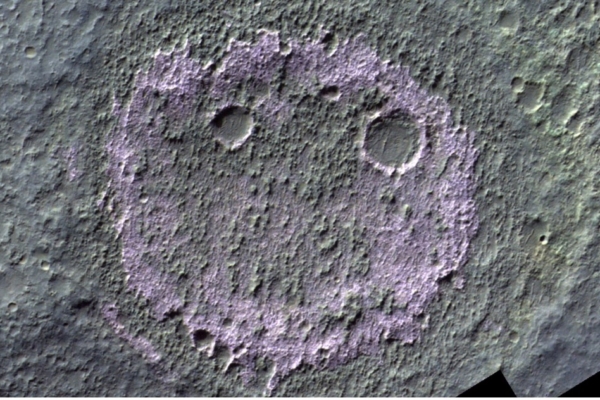The European Space Agency (ESA) recently released a series of images of the Martian surface, including one depicting a “smiley face.” This smiley face is a remnant of an ancient, desiccated lake from billions of years ago, potentially harboring signs of life.
On September 7th, ESA shared several images, including the “smiley face,” on its Instagram account. These images were captured by the ExoMars Trace Gas Orbiter, a satellite that has been measuring methane and other trace gases in the Martian atmosphere since 2016.
The “smiley face” is composed of a ring of ancient chloride salt deposits outlining the face, with two cratered depressions serving as its eyes. These deposits are remnants of ancient water bodies, suggesting that this area may have been habitable billions of years ago.
Despite Mars being a barren world today, approximately 3.5 billion years ago, the planet had rivers, lakes, and possibly oceans. These water bodies eventually dried up due to severe climate changes.
ESA noted that chloride-rich areas (like these chloride salt deposits) are typically hard to distinguish in regular black and white images but appear pink or purple in photos taken with an infrared camera, making them easily identifiable, as seen in the “smiley face” picture.
This “smiley face” image was part of a study published on August 3 in the journal “Scientific Data.” Researchers identified a total of 965 different sedimentary deposits on the Martian surface, ranging in width from 300 to 3,000 meters. The size of this “smiley face” remains unknown.
Researchers stated in their report that these sedimentary deposits are crucial because they “provide optimal conditions for biological activity and preservation,” making them a key target for astrobiological exploration.
In some regions, these chloride salt deposits serve as the only evidence of past water presence, but they could also have significant implications for the search for evidence of ancient life on Mars.
In addition to this “smiley face,” scientists have previously discovered peculiar landforms resembling a bear’s face on the Martian surface, further adding to the intrigue of Mars’ geological features.
Previously reported by Epoch Times, NASA’s Mars Reconnaissance Orbiter captured an image of a peculiar terrain structure on the Martian surface resembling a bear’s face. The formation not only outlines the head but also features eyes, a nose, and a mouth, giving the appearance of a smiling bear.

